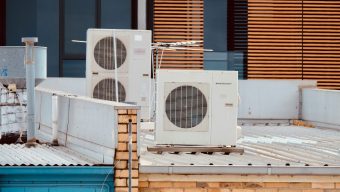
The Council today has adopted two regulations to phase down fluorinated gases (F-gases) and other substances that cause global warming and deplete the ozone layer.
While existing EU legislation has already limited the use of these gases and substances significantly, the new rules will further reduce their emissions into the atmosphere and contribute to limiting global temperature rise, in line with the Paris Agreement.
Fluorinated gases
Under the new rules, the consumption of hydrofluorocarbons (HFCs) will be completely phased out by 2050. On the other hand, the production of HFC, in terms of production rights allocated by the Commission to produce HFCs, will be phased down to a minimum (15 per cent) as of 2036. Both production and consumption will be phased down on the basis of a tight schedule with a degressive quota allocation (Annexes V and VII).
The text introduces a full ban on placing products and equipment containing HFCs on the market for several categories for which it is technologically and economically feasible to switch to F-gas alternatives, including certain domestic refrigerators, chillers, foams and aerosols. It also sets specific dates for the complete phase-out of the use of F-gases in air conditioning, heat pumps and switchgears:
- 2032 for small monoblock heat pumps and air conditioning (<12kW)
- 2035 for split air conditioning and heat pumps, with earlier deadlines for certain types of split systems with higher global warming potential
- 2030 for medium-voltage switchgears (up to and including 52 kV) relying on F-gases
- 2032 for high-voltage switchgears (>52kV)
The impacts and effects of the regulation, including an assessment of the existence of cost-effective, technically feasible and sufficiently available alternatives to replace F-gases, will be reviewed by the Commission no later than 1 January 2030. By 2040 the Commission will also have to evaluate the feasibility of the 2050 phase-out date for the consumption of HFCs and the need for HFCs in sectors where they are still used, taking into account technological developments and the availability of alternatives to HFCs for the applications in question.
More:
- EU CONTINUES PHASING OUT USE OF CHEMICALS THAT HARM THE OZONE LAYER
- GREEN COOLING – TACKLING CLIMATE CHANGE WITH ECO-FRIENDLY TECHNOLOGY
- OZONE LAYER RECOVERY IS AN ENVIRONMENTAL SUCCESS STORY
Ozone depleting substances
The regulation bans ODSs for almost all uses, with strictly limited exemptions.
The text includes an exemption for the use of ODSs as feedstock to produce other substances. The Commission will be tasked with regularly updating a list of ODSs whose use as feedstock is banned. The text also permits the use of ODSs under strict conditions as process agents, in laboratories and for fire protection in special applications such as military equipment and airplanes.
The regulation extends the requirement to recover ODSs for destruction, recycling or reclamation to cover sectors such as building materials (insulation foams), refrigeration, air conditioning and heat pump equipment, equipment containing solvents or fire protection systems and fire extinguishers and other equipment, if technically and economically feasible.
Next steps
Today’s vote by the Council closes the adoption procedure. The two regulations will now be signed by the Council and the European Parliament. They will then be published in the EU’s Official Journal and enter into force 20 days later.
Source: Consilium.europa.eu



